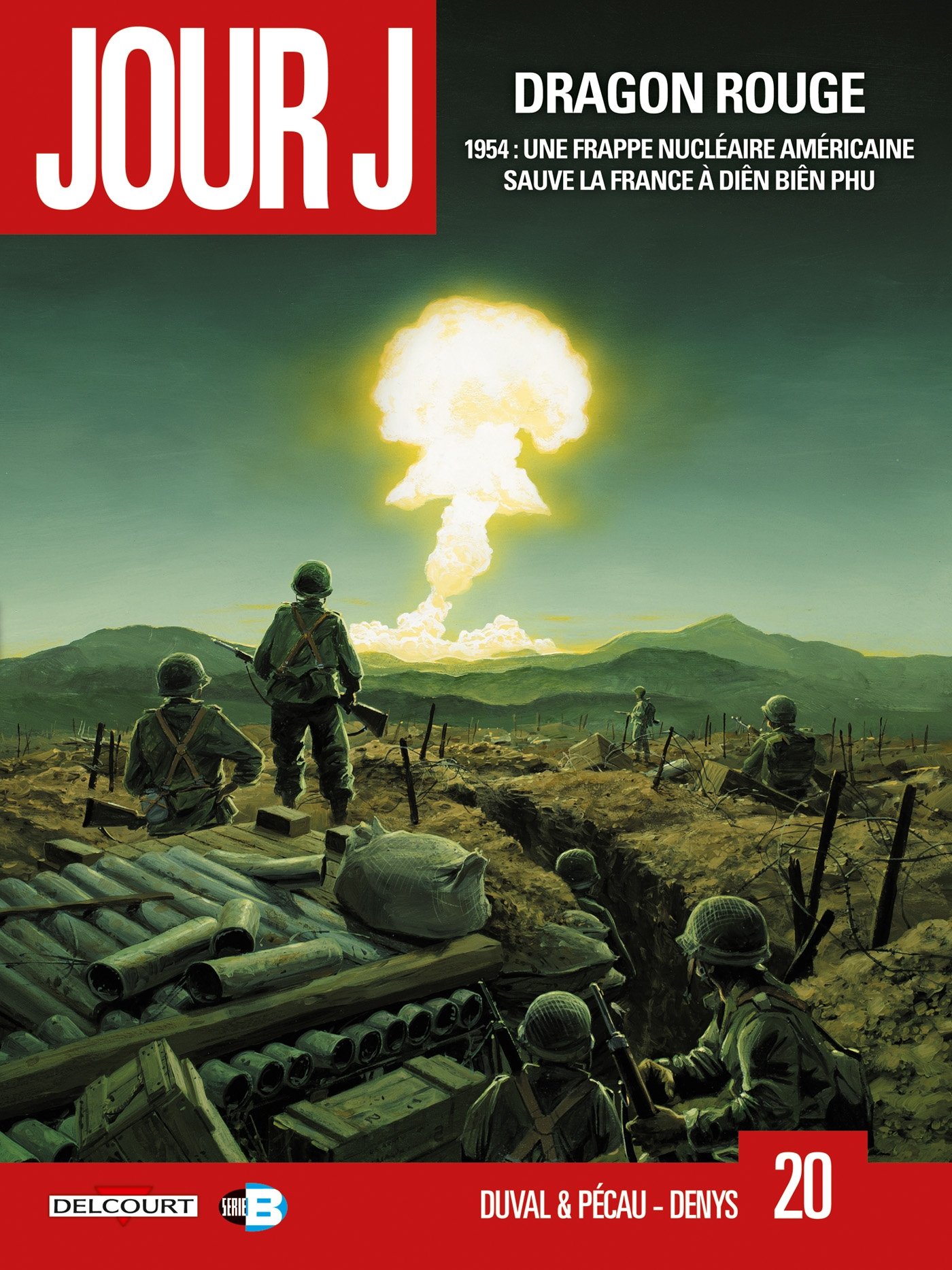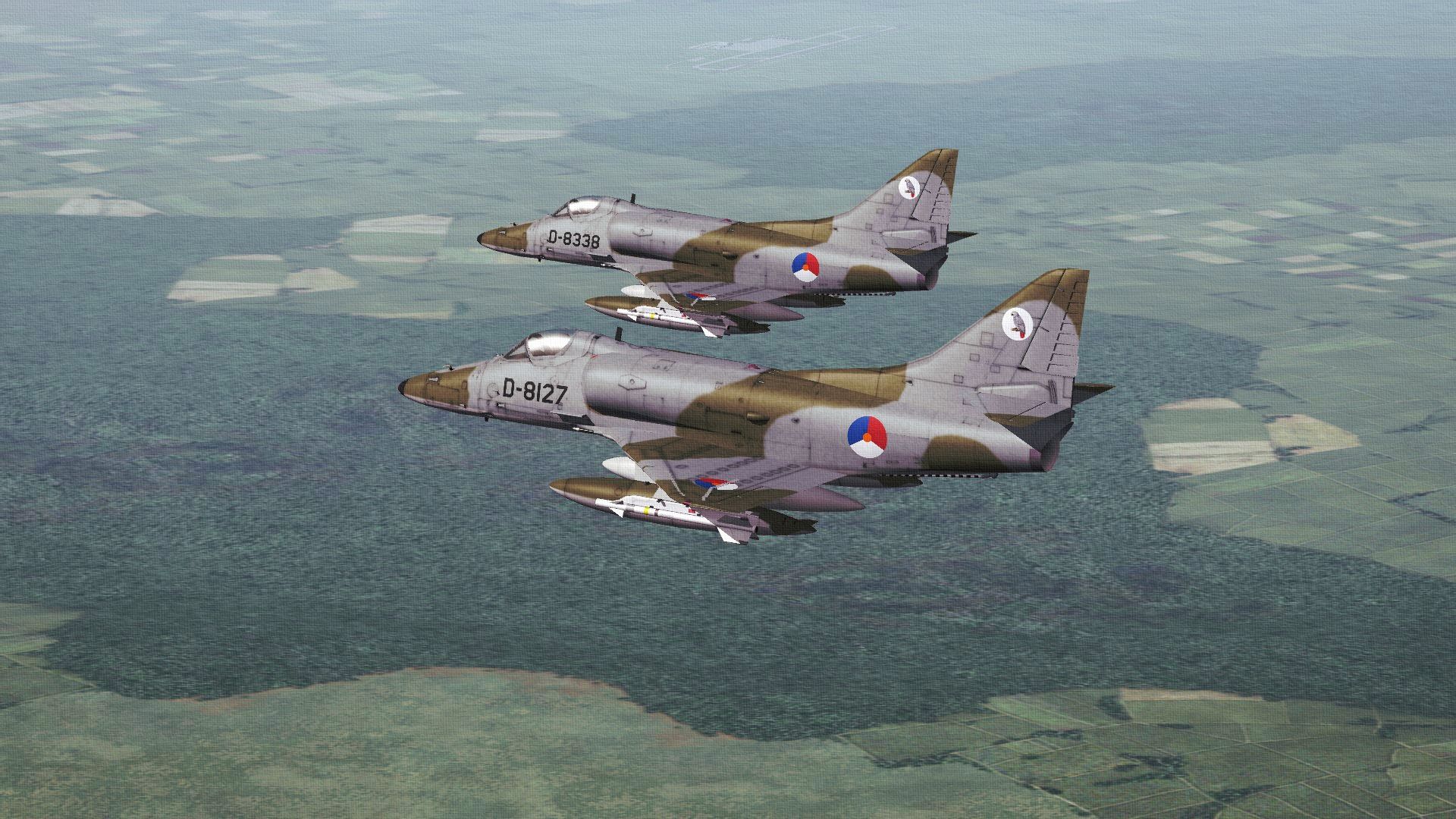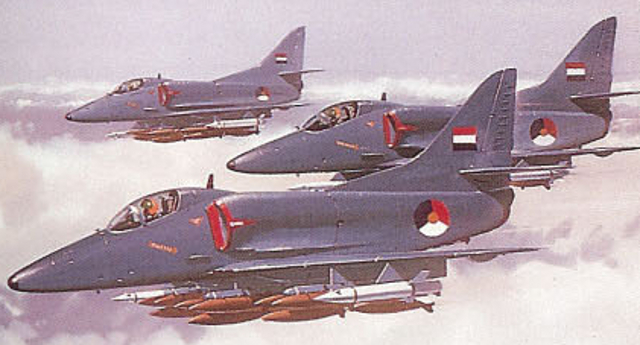February 11, 1959
Vlakke Hoek Bay
The three Indonesian MTBs turn back for base upon seeing the flash from the exploding missile above them. The main part of their mission complete, all three boats go to full power and begin to race to safety, aiming to exit the bay before the Dutch Navy can respond with heavier forces.
Unfortunately for them, two Dutch frigates were already approaching, having been kept nearby and at a high state of readiness in order to respond to just such an act of aggression by Indonesia. Fortunately for the Indonesians, they had planned for this eventuality and quickly implemented their contingency plans. As the first radio calls go out from the Indonesian torpedo boats to activate the second phase of their plans, splashes begin to surround them as the Dutch frigates open fire on them. Weaving back and forth and chasing the splashes, the Indonesian crews run for their lives while praying that their superior's schemes would actually work.
From out of the night sky, six MiG-17s dove down on the frigates. Armed with sixteen S-5 57mm rockets each, the MiGs pose a real threat to the Dutch frigates. Responding to the air threat, and with the torpedo boats seemingly running for their lives, the Dutch switch over their ammunition from High Explosive to VT-Frag and begin to swivel their guns skyward to try and engage the diving MiGs before they can launch their own attack. But time is not on their side.
Firing from a range of approximately one and a half miles away, the MiGs begin to ripple fire their rockets. Ninety-one of the ninety-six unguided rockets impact harmlessly in the waters of the bay. Five however, find steel. Armed with high-explosive fragmentation warheads, the rockets largely cause only superficial damage to the ships, though several exposed gun crews on both ships are laid low as the hot steel fragments scythe through them. One rocket however lands a perfect golden BB on the Eversteen. Crashing through one of the bridge windows, the rocket slams into the deck and triggers the impact fuse. The resulting blast destroys the bridge and sends hot steel ripping through the bridge crew, killing everyone on the bridge and sending the Eversteen into a slow right turn.
With fires breaking out on the stricken Dutch frigate, her damage control parties rush to contain the flames. From her shattered bridge windows, smoke billows into the inky night sky. More dangerously, the Eversteen had been the lead ship of the formation and the squadron flagship. The loss of her bridge crew and resulting confusion as she slowly began to circle to starboard, throws the small force into chaos. The reappearance of the Indonesian torpedo boats goes unnoticed in the chaos.
The moment the Dutch shells stopped splashing into the sea around them, the fleeing torpedo boats turned and began closing the range to the Dutch frigates. As the first 4.7" rounds were fired at the Indonesian fighters from HNLMS Eversteen and Kortenaer, the Motor Torpedo Boats KRI Matjan Tutul and Harimau launched four torpedos each, with each of the torpedo boats targeting one of the frigates. The flames from the exploding rockets provided the Indonesian crews marvelous aiming points in the dark night. The third boat in the squadron, KRI Matjan Kumbang is held in reserve to finish off any cripples.
Their mission of distracting the Dutch frigates done, the Indonesian MiGs break off and run from the frigates before they can find the range and fill the sky with steel. With their attention elsewhere, the Dutch fail to notice the approaching torpedos until it was too late. On the Eversteen, the ship had just been brought back under control by damage control parties manning the rudder room. They had just brought the ship out of her starboard circle and it was this that doomed her as the first Indonesian torpedo slammed into her hull abreast her engineering spaces and detonated. For the Dutch however, luck was at least partially on their side. The poor shooting and lax maintenance by the Indonesians meant that of the other seven torpedos launched, six failed to hit the two frigates and the last failed to detonate upon striking the Kortenaer.
Komodor Yos Sudarso, deciding that discretion is the better part of valor now that a great victory had been won, orders the Kumbang not to engage as the undamaged Dutch ship would now be out for blood. Turning out of the bay, the three torpedo boats race for the open sea and home. Their people would have something to celebrate in the morning and the damn Dutch would know that Indonesia would not be ordered about by anyone.
Within the Bay, the Kortenaer was doing everything she could to assist her stricken sister. But the damage to the seventeen-hundred ton ship was severe. Though the Eversteen would eventually be lost, her crew was rescued with the exception of 38 sailors who were killed when the torpedo and rockets struck. Also rescued were the two aircrew who had bailed out of their destroyed Neptune. As Kortenaer withdrew from the area, everyone involved in the action knew, the New Guinea crises had just escalated.




